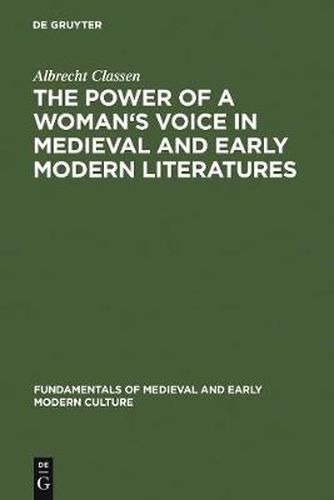Readings Newsletter
Become a Readings Member to make your shopping experience even easier.
Sign in or sign up for free!
You’re not far away from qualifying for FREE standard shipping within Australia
You’ve qualified for FREE standard shipping within Australia
The cart is loading…






This title is printed to order. This book may have been self-published. If so, we cannot guarantee the quality of the content. In the main most books will have gone through the editing process however some may not. We therefore suggest that you be aware of this before ordering this book. If in doubt check either the author or publisher’s details as we are unable to accept any returns unless they are faulty. Please contact us if you have any questions.
The study takes the received view among scholars that women in the Middle Ages were faced with sustained misogyny and that their voices were seldom heard in public and subjects it to a critical analysis. The ten chapters deal with various aspects of the question, and the voices of a variety of authors - both female and male - are heard. The study opens with an enquiry into violence against women, including in texts by male writers (Hartmann von Aue, Gottfried von Strassburg, Wolfram von Eschenbach) which indeed describe instances of violence, but adopt an extremely critical stance towards them. It then proceeds to show how women were able to develop an independent identity in various genres and could present themselves as authorities in the public eye. Mystic texts by Hildegard of Bingen, Marie de France and Margery Kempe, the medieval conduct poem known as Die Winsbeckin, the Devout Books of Sisters composed in convents in South-West Germany, but also quasi-historical documents such as the memoirs of Helene Kottaner or Anna Weckerin’s cookery book, demonstrate that far more women were in the public gaze than had hitherto been assumed and that they possessed the self-confidence to establish their positions with their intellectual and their literary achievements.
$9.00 standard shipping within Australia
FREE standard shipping within Australia for orders over $100.00
Express & International shipping calculated at checkout
This title is printed to order. This book may have been self-published. If so, we cannot guarantee the quality of the content. In the main most books will have gone through the editing process however some may not. We therefore suggest that you be aware of this before ordering this book. If in doubt check either the author or publisher’s details as we are unable to accept any returns unless they are faulty. Please contact us if you have any questions.
The study takes the received view among scholars that women in the Middle Ages were faced with sustained misogyny and that their voices were seldom heard in public and subjects it to a critical analysis. The ten chapters deal with various aspects of the question, and the voices of a variety of authors - both female and male - are heard. The study opens with an enquiry into violence against women, including in texts by male writers (Hartmann von Aue, Gottfried von Strassburg, Wolfram von Eschenbach) which indeed describe instances of violence, but adopt an extremely critical stance towards them. It then proceeds to show how women were able to develop an independent identity in various genres and could present themselves as authorities in the public eye. Mystic texts by Hildegard of Bingen, Marie de France and Margery Kempe, the medieval conduct poem known as Die Winsbeckin, the Devout Books of Sisters composed in convents in South-West Germany, but also quasi-historical documents such as the memoirs of Helene Kottaner or Anna Weckerin’s cookery book, demonstrate that far more women were in the public gaze than had hitherto been assumed and that they possessed the self-confidence to establish their positions with their intellectual and their literary achievements.